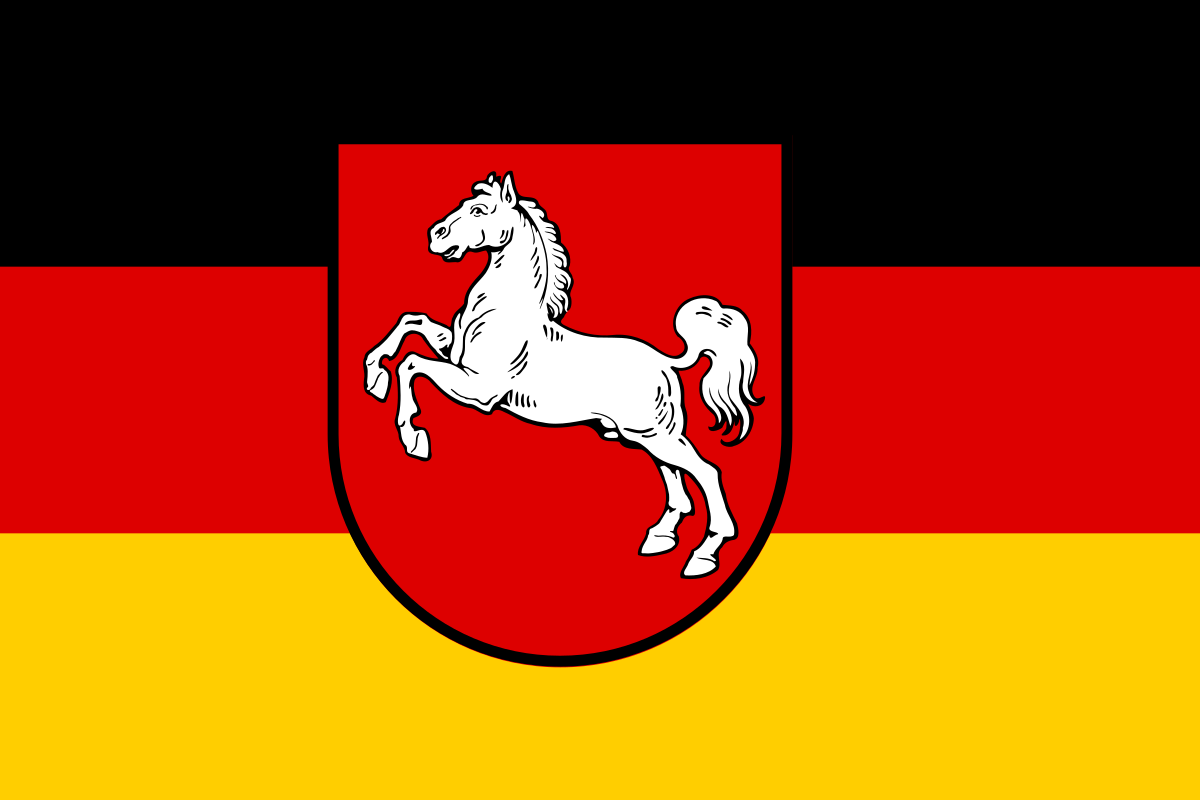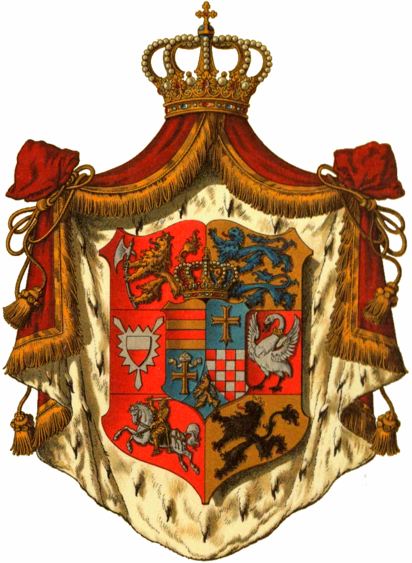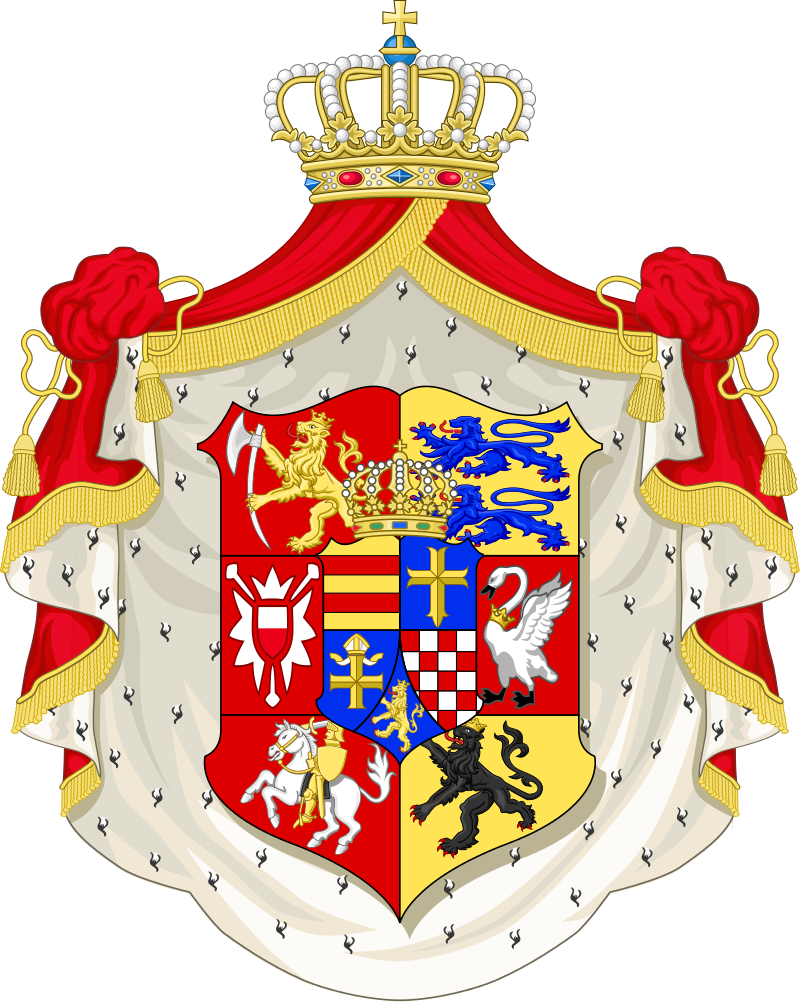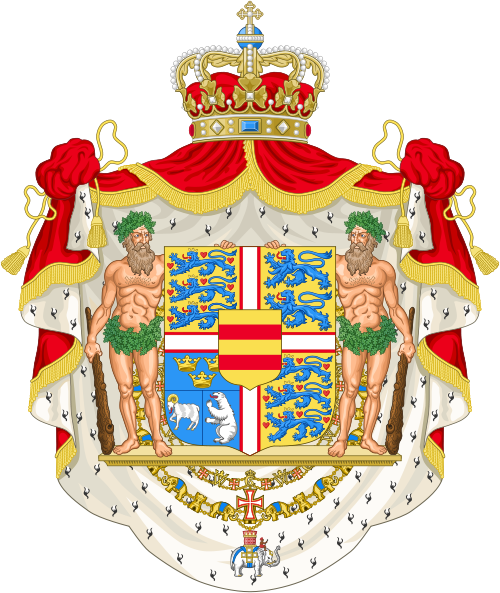
漢德百科全書 | 汉德百科全书
 Könighaus
Könighaus

 History
History
 L 1000 - 1500 AD
L 1000 - 1500 AD
 Könighaus
Könighaus
 Herzog von Holstein
Herzog von Holstein
 Könighaus
Könighaus
 Großherzog von Oldenburg
Großherzog von Oldenburg
 Könighaus
Könighaus
 Herzog von Schleswig
Herzog von Schleswig
 Könighaus
Könighaus
 King of Denmark
King of Denmark
 Könighaus
Könighaus
 König von Griechenland
König von Griechenland
 Könighaus
Könighaus
 König von Norwegen
König von Norwegen
 Könighaus
Könighaus
 König von Schweden
König von Schweden
 Könighaus
Könighaus
 Emperor of Russia
Emperor of Russia

 Lower Saxony
Lower Saxony

 Royalty
Royalty

 Schleswig-Holstein
Schleswig-Holstein



Russisches Kaiserreich ist neben Kaiserreich Russland[2] der in der Geschichtswissenschaft gebräuchliche Name[3][4] für das Russische Reich im Zeitraum von 1721 bis 1917. Die offizielle Staatsbezeichnung ist russisch (Все-)Росси́йская импе́рия, Transkription: (Wse-)Rossijskaja imperija, wörtlich: „(All-)Russisches Imperium“.[5][6] Ebenso finden die Bezeichnungen Russisches Zarenreich und zaristisches Russland[7] zuweilen Verwendung, obgleich Zar Peter der Große den Zarentitel 1721 durch den des Kaisers ersetzt hatte.
Zur Zeit seiner größten Ausdehnung Mitte des 19. Jahrhunderts stellte das Territorium des Russischen Kaiserreichs das drittgrößte Reich der Weltgeschichte (nach dem Britischen Weltreich und dem Mongolischen Reich) beziehungsweise das größte zusammenhängende neuzeitliche Reich dar. Infolge der Februarrevolution 1917 ging das Kaiserreich unter.
俄罗斯帝国(俄语:Россійская Имперія[注 1])在中文中常简称为帝俄、沙俄[注 2]、俄国,是存在于18世纪至20世纪的统一君主制国家,也是俄罗斯历史上最后一个君主制国家。1721年,俄国沙皇彼得一世率军赢得大北方战争后,改称“全俄罗斯皇帝”(Императоръ Всероссійскій[注 3]),创立俄罗斯帝国[注 4]。
俄罗斯帝国由罗曼诺夫王朝统治,彼得一世为首位皇帝。彼得一世在位期间展开改革,俄国在经济、军事和文化上均有显著进展,开启效法西欧的近代化进程。在大北方战争中,俄国击败北欧强权瑞典,取得波罗的海出海口,俄国由内陆国转变为滨海国,逐渐成长为欧洲强国。帝国在叶卡捷琳娜二世女皇统治时期步入黄金时代,参与瓜分波兰,并两次对土作战,展开一系列的领土扩张,夺得黑海出海口,将帝国的西部边界扩展至中欧。拿破仑战争期间,俄国积极参与反法同盟,在俄法战争期间击退法军入侵。维也纳会议后,俄国主导成立神圣同盟,成为欧洲列强政治的中心之一。在随后的新帝国主义时期,其势力范围继续向高加索、中亚和远东方向扩张[3]。俄国版图在19世纪中期达到极盛,横跨欧亚大陆,北起北冰洋、南达黑海南部,西起波罗的海、东达阿拉斯加,涵盖了整个中亚、北高加索及芬兰地区,与挪威、瑞典、德国、奥匈帝国、罗马尼亚、奥斯曼帝国、波斯、阿富汗、中国、朝鲜与日本接壤,按国土面积计算,成为历史上国土面积第三大的帝国[4][5]。根据1897年人口普查,其人口达到1.25亿,位居世界第三,仅次于大英帝国和中国清朝。
尽管在政治、军事和外交上皆为当时欧洲数一数二的强国,俄罗斯帝国在经济上仍保守闭塞,农业根基深厚,未曾经历大规模的产业革命。自15世纪至19世纪中期,俄国的土地由庄园主及贵族长期垄断,农民大多为缺乏人身自由的农奴,生产效率低下。亚历山大二世统治时期,俄国于克里米亚战争中挫败,继而于1861年展开对内的大规模农奴制改革,宣告废除农奴制,开始修建铁路、兴办近代工厂,建立近代化军队,工业化在亚历山大三世时期进展巨大。但俄国由于幅员辽阔,国内在经济、民族和宗教上分歧较大,趋于动荡,特别是受19世纪中期欧洲革命风潮影响,反对自彼得一世起建立的专制主义政治传统的浪潮此起彼伏,冲突不断。1881年,皇帝亚历山大二世被激进主义者炸死。1905年,俄国在日俄战争中被亚洲的新兴强权日本击败,诱发1905年俄国革命。革命促使皇帝尼古拉二世实行立宪,并由首相斯托雷平展开经济改革,成果可观[6]。
俄国自称为“第三罗马”,自视拜占庭帝国的后继者,担负保卫东正教信仰的责任。俄国在尼古拉一世期间确立了“专制,东正教,民族特性”(Правосла́вие, самодержа́вие, наро́дность)的官方民族理论,并自此积极支持巴尔干半岛信仰东正教的南斯拉夫人的民族主义运动。1914年爆发萨拉热窝事件,奥匈帝国向独立的斯拉夫东正教国家塞尔维亚王国宣战,俄国加入塞尔维亚一方参战,并作为协约国成员,与英法一同对抗奥匈帝国及其盟友德国,卷入第一次世界大战。俄国难以支应德国的攻势,自此深入战争泥潭,国内经济亦随之陷入崩溃。1917年,二月革命爆发,俄国君主制遭到推翻,宣告俄罗斯帝国的终结[注 5][7]。
ロシア帝国(ロシアていこく、ロシア語: Российская империя ラスィーイスカヤ・インピェーリヤ)は、1721年から1917年までに存在した帝国である。ロシアを始め、フィンランド、リボニア、リトアニア、ベラルーシ、ウクライナ、ポーランド、カフカーズ、中央アジア、シベリア、外満州などのユーラシア大陸の北部を広く支配していた。帝政ロシア(ていせいロシア)とも呼ばれる。通常は1721年のピョートル1世即位からロシア帝国の名称を用いることが多い。統治王家のロマノフ家にちなんでロマノフ朝とも呼ばれるがこちらはミハイル・ロマノフがロシア・ツァーリ国のツァーリに即位した1613年を成立年とする。
君主がツァーリを名乗ったそれ以前のロシア・ツァーリ国においても「ロシア帝国」と翻訳されることがある[n 1][n 2]が、ロシア語では「ツァーリ」[1](本来は東ローマ皇帝を指したが、やがて一部の国の王、ハーンなどを指す語となった)と「インペラートル」(西欧に倣った皇帝を指す語)[2][3]は異なる称号であるため、留意を要する[3]。
帝政は1721年にツァーリ・ピョートル1世が皇帝(インペラートル)を宣言したことに始まり、第一次世界大戦中の1917年に起こった二月革命でのニコライ2世の退位によって終焉する。
領土は、19世紀末の時点において、のちのソヴィエト連邦の領域にフィンランドとポーランドの一部を加えたものとほぼ一致する面積2000万km2超の広域に及び、1億を越える人口を支配した。首都は、1712年まで伝統的にモスクワ国家の首府であったモスクワからサンクトペテルブルクに移され、以降帝国の終末まで帝都となった[n 3]。
政治体制は皇帝による専制政治であったが、帝政末期には国家基本法(憲法)が公布され、国家評議会とドゥーマからなる二院制議会が設けられて立憲君主制に移行した。20世紀はじめの時点で陸軍の規模は平時110万人、戦時450万人でありヨーロッパ最大であった[4][5]。海軍力は長い間、世界第3位であったが、日露戦争で大損失を出して以降は世界第6位となっている[6]。
宗教はキリスト教正教会(ロシア正教会)が国教ではあるが、領土の拡大に伴い大規模なムスリム社会を内包するようになった。そのほかフィンランドやバルト地方のルター派、旧ポーランド・リトアニアのカトリックそしてユダヤ人コミュニティも存在した。
ロシア帝国の臣民は貴族、聖職者、名誉市民、商人・町人・職人、カザークそして農民といった身分に分けられていた。貴族領地の農民は人格的な隷属を強いられる農奴であり、ロシアの農奴制は1861年まで維持された。シベリアの先住民や中央アジアのムスリムそしてユダヤ人は異族人に区分されていた。
ロシア帝国ではロシア暦(ユリウス暦)が使用されており、文中の日付はこれに従う。ロシア暦をグレゴリオ暦(新暦)に変換するには17世紀は10日、18世紀は11日、19世紀は12日そして20世紀では13日を加えるとよい[7]。
The Russian Empire,[d] also known as Imperial Russia[e] or simply Russia,[f] was an empire that existed across Eurasia and North America from 1721, following the end of the Great Northern War, until the Republic was proclaimed by the Provisional Government that took power after the February Revolution of 1917.[4]
The third largest empire in world history, at its greatest extent stretching over three continents, Europe, Asia, and North America, the Russian Empire was surpassed in landmass only by the British and Mongol empires. The rise of the Russian Empire happened in association with the decline of neighboring rival powers: the Swedish Empire, the Polish–Lithuanian Commonwealth, Persia and the Ottoman Empire. It played a major role in 1812–1814 in defeating Napoleon's ambitions to control Europe and expanded to the west and south.
The House of Romanov ruled the Russian Empire from 1721 until 1762, and its matrilineal branch of patrilineal German descent the House of Holstein-Gottorp-Romanov ruled from 1762. At the beginning of the 19th century, the Russian Empire extended from the Arctic Ocean in the north to the Black Sea in the south, from the Baltic Sea on the west to the Pacific Ocean, into Alaska and Northern California in America on the east.[5] With 125.6 million subjects registered by the 1897 census, it had the third-largest population in the world at the time, after Qing China and India. Like all empires, it included a large disparity in terms of economics, ethnicity, and religion. There were numerous dissident elements, who launched numerous rebellions and assassination attempts; they were closely watched by the secret police, with thousands exiled to Siberia.
Economically, the empire had a predominantly agricultural base, with low productivity on large estates worked by serfs, Russian peasants (until they were freed in 1861). The economy slowly industrialized with the help of foreign investments in railways and factories. The land was ruled by a nobility (the boyars) from the 10th through the 17th centuries, and subsequently by an emperor. Tsar Ivan III (1462–1505) laid the groundwork for the empire that later emerged. He tripled the territory of his state, ended the dominance of the Golden Horde, renovated the Moscow Kremlin, and laid the foundations of the Russian state. Emperor Peter the Great (1682–1725) fought numerous wars and expanded an already huge empire into a major European power. He moved the capital from Moscow to the new model city of St. Petersburg, and led a cultural revolution that replaced some of the traditionalist and medieval social and political mores with a modern, scientific, Europe-oriented, and rationalist system.
Empress Catherine the Great (reigned 1762–1796) presided over a golden age; she expanded the state by conquest, colonization and diplomacy, continuing Peter the Great's policy of modernization along Western European lines. Emperor Alexander II (1855–1881) promoted numerous reforms, most dramatically the emancipation of all 23 million serfs in 1861. His policy in Eastern Europe involved protecting the Orthodox Christians under the rule of the Ottoman Empire. That connection by 1914 led to Russia's entry into the First World War on the side of France, the United Kingdom, and Serbia, against the German, Austrian, and Ottoman empires.
The Russian Empire functioned as an absolute monarchy on principles of Orthodoxy, Autocracy, and Nationality until the Revolution of 1905 and then became a de jure constitutional monarchy. The empire collapsed during the February Revolution of 1917, largely as a result of massive failures in its participation in the First World War.
L'Empire russe, ou empire de Russie, (en russe : Российская империя, Rossiïskaïa imperia ; en orthographe d'avant 1918 : Россійская имперія) est l'entité politique de la Russie de 1721, sous le règne de Pierre Ier, à 1917, année de la déposition de Nicolas II, en fait, de son frère Michel Alexandrovitch (Michel II), dernier empereur au début de la révolution russe en faveur duquel il avait abdiqué. Sa capitale est Saint-Pétersbourg (russifié en Petrograd, en raison de sa consonance allemande, au début de la Première Guerre mondiale).
À la fin du XIXe siècle, la taille de l'Empire est d'environ 21 800 000 kilomètres carrés (presque 1/6 des terres émergées du globe). En plus des territoires de l'actuelle fédération de Russie, la Russie compte les provinces baltes, la majeure partie de l'Ukraine, la Biélorussie, une partie de la Pologne, la Moldavie orientale (actuelle république de Moldavie), le Caucase, le grand-duché de Finlande et une partie importante de l'Asie centrale, sans compter la colonisation russe des Amériques essentiellement l'Alaska, vendue aux États-Unis en 1867, et la ville fortifiée de Port-Arthur, louée à bail à la Chine en 1894.
En 1914, l'Empire russe se subdivise en 81 gouvernements et 20 oblasts (« régions »). Les vassaux et les protectorats de la Russie comptent le khanat de Boukhara, le khanat de Khiva et, après 1914, Touva. Outre la Russie elle-même, l'Empire comprend le royaume de Pologne (1815-1915), placé sous le patronage de la Russie par le congrès de Vienne, et le grand-duché de Finlande (1809-1917).
Selon le recensement de 1897, l'Empire compte à cette date environ 128,2 millions d'habitants, dont plus de 70 % (93,4 millions) vivent en Russie d'Europe. Plus de cent groupes ethniques différents vivent dans le territoire de l'Empire (les Russes représentant 45 % de la population). L'Empire russe n'est pas un État-nation mais une entité multi-ethnique1 intégrant une diversité de peuples en son sein dès ses origines2.
Il s'agit du pays le plus peuplé du monde occidental (68 millions d'habitants dans l'Empire allemand, 95 millions aux États-Unis) avec une croissance démographique forte. En effet, au recensement de 1913, on compte 159 millions d'habitants.
L'Empire russe est une autocratie dirigée par un empereur, appelé le plus souvent Gosoudar (« souverain »), ou tsar dans les campagnes. Mais sa dénomination officielle est imperator. Il est issu de la dynastie des Romanov. Le christianisme orthodoxe est la religion officielle de l'Empire, administrée par le souverain par le truchement du Saint-Synode. Les sujets de l'Empire sont séparés en ordres (classes) comme le dvorianstvoNote 1 (la « noblesse »), le clergé, les marchands (répartis en plusieurs guildes), le mechtchantsvo (« petits commerçants » ou artisans), les cosaques, et les paysans (libres, d'État, ou de la noblesse).
L'Impero russo (in russo: Российская империя, Rossijskaja imperija), spesso indicato anche come Russia imperiale, fu l'organismo statale che per volontà di Pietro I il Grande (1682–1725) governò la Russia zarista dal 1721 fino alla deposizione di Nicola II (1894–1917) a seguito della rivoluzione di febbraio del 1917.
Venne preceduto dal regno degli zar moscoviti e seguito dall'Unione Sovietica. Tutti gli zar dell'impero appartennero alla famiglia dei Romanov. Dal punto di vista territoriale fu tra i più grandi Stati della storia: nel 1866 si estendeva su tre continenti (Europa, Asia e Nord America), confinando tanto con la Prussia quanto con la provincia del Canada (Impero britannico), affacciandosi sia sul mar Baltico che sull'oceano Pacifico.
Economicamente l'impero era pesantemente legato all'agricoltura, con una bassa produttività ed una forte presenza di servitù della gleba sino a quando questa non venne abolita definitivamente nel 1861. L'economia col tempo seppe industrializzarsi con l'aiuto di investimenti stranieri nelle ferrovie e nelle fabbriche. La terra venne perlopiù governata dalla nobiltà locale (boiardi) dal X al XVII secolo e formalmente era governata dall'imperatore (zar). Lo zar Ivan III (1462–1505) preparò il terreno per accogliere le riforme dei secoli successivi: egli triplicò il territorio del suo Stato, pose fine alla dominazione dell'Orda d'oro, rinnovò il Cremlino di Mosca e fondò le principali istituzioni dello stato russo. Lo zar Pietro il Grande (1682–1725) combatté numerose guerre e costruì un impero moderno e forte al punto da imporsi come una tra le maggiori potenze europee della sua epoca. Egli spostò la capitale da Mosca alla sua nuova città di San Pietroburgo e rimpiazzò i tradizionali e medievali modelli sociali e politici con un sistema razionalista ispirato al modello occidentale.
Caterina la Grande (1761–1796) regnò durante l'epoca d'oro della Russia: ella si preoccupò di espandere rapidamente la nazione con la conquista, la colonizzazione e la diplomazia. Continuò l'opera di modernizzazione introdotta da Pietro il Grande seguendo linee europeiste. Lo zar Alessandro II (1855–1881) promosse numerose riforme tra cui quella relativa all'emancipazione di 23 milioni di servi nel 1861. La sua politica nell'Europa orientale fu quella di proteggere i locali cristiani ortodossi che si trovavano a vivere sotto il governo dell'Impero ottomano. Questo coinvolgimento ed altri portarono la Russia a entrare nella prima guerra mondiale nel 1914 e a schierarsi con Francia, Gran Bretagna e Serbia contro Germania, Austria e Impero ottomano. La Russia rimase una monarchia assoluta sino alla rivoluzione del 1905 e quindi divenne una monarchia costituzionale. L'impero collassò durante la rivoluzione di febbraio del 1917 in gran parte a causa della fallimentare partecipazione dello stato alla Grande guerra.
Imperio ruso (en ruso: Российская Империя, Россійская Имперія en ortografía anterior a 1918) es la denominación que se le da a Rusia entre 1721 y 1917. Abarcó grandes zonas de los continentes europeo, asiático y norteamericano, siendo el sistema político sucesor del Zarato ruso.1
La expresión «Rusia imperial» designa el periodo cronológico de la historia rusa desde la conquista de los territorios comprendidos entre el mar Báltico y el océano Pacífico iniciada por Pedro I hasta el emperador Nicolás II y el comienzo de la Revolución de 1917.
La capital del imperio fue San Petersburgo (rebautizada en 1914 como Petrogrado a raíz del inicio de la Primera Guerra mundial). A finales del siglo XIX, el imperio comprendía 22.800.000 km². De acuerdo al censo de 1897, su población alcanzaba las 125.640.000 personas, habitando la mayoría (93,44 millones) en Europa. Más de 100 diferentes grupos étnicos convivían en el imperio (la etnia rusa componía el 44% de la población). Además del actual territorio de Rusia, en 1917 el Imperio ruso incluía territorios de los estados bálticos, Ucrania, Bielorrusia, parte de Polonia (Zarato de Polonia), Moldavia (Besarabia), Rumania (Valaquia y Moldavia), el Cáucaso (las actuales naciones de Armenia, Georgia y Azerbaiyán), Finlandia, la mayoría del Asia Central (actuales repúblicas de Turkmenistán, Tayikistán, Kirguistán y Uzbekistán), y una parte de Turquía (las provincias de Ardahán, Artvin, Iğdır y Kars, siendo éstos territorios partes de la Armenia turca). Entre 1741 y 1867, el Imperio ruso también incluía Alaska, al otro lado del estrecho de Bering.
En 1914, el Imperio ruso estaba dividido en 81 provincias (óblasti) y 20 regiones (gubernias). Entre los vasallos y protectorados del imperio se incluían el Emirato de Bujará, el Kanato de Jiva y, tras 1914, Tuvá.
El Imperio ruso estaba gobernado por una monarquía hereditaria liderada por un rey autocrático (zar) desde la dinastía Románov. La religión oficial del imperio era el cristianismo ortodoxo, controlado por el monarca a través del Santísimo Sínodo Gobernante. Sus habitantes estaban divididos en estratos (clases) tales como dvoryanstvo («nobleza»), el clero, los comerciantes, los cosacos y los campesinos. Los nativos de Siberia y Asia Central fueron oficialmente registrados en el estrato inorodtsy («extranjeros»).
Su escudo de armas fue el gran escudo del Imperio ruso, y su himno «Dios salve al zar» (Боже, Царя храни).
Después de que la monarquía zarista fuese derrocada durante la Revolución de febrero en 1917, Rusia fue declarada República bajo el Gobierno provisional ruso.
Росси́йская импе́рия (рус. дореф. Россійская Имперія; также Всеросси́йская импе́рия, Росси́я) — государство, существовавшее в период с 22 октября (2 ноября) 1721 года до Февральской революции и провозглашения республики в 1917 году Временным правительством.
Империя была провозглашена 22 октября (2 ноября) 1721 года по итогам Север�




石勒苏益格(丹麦语:Hertugdømmet Slesvig;德语:Herzogtum Schleswig; 低地德语:Sleswig;北弗里西亚语:Slaswik)位于德国和丹麦的边界以北约60公里和以南约70公里的范围。该地区的传统意义在于北海和波罗的海之间的货物转运,将通过俄罗斯的贸易路线与沿着莱茵河和大西洋海岸的贸易路线相连接(参见基尔运河)。
11至12世纪时,石勒苏益格是一个丹麦的公国。到了15世纪,采邑与姻亲令它与德意志公国荷尔斯泰因关系亲近。前者一直隶属丹麦,后者则属神圣罗马帝国。于是,到了19世纪,因为民族国家的兴起,德丹一直有领土争议。1460年,石勒苏益格公国与丹麦王国建立共主邦联,在1864年前是丹麦的封地。1864年,普鲁士王国和奥地利帝国发动普丹战争,击败丹麦,共同占领石勒苏益格与荷尔斯泰因两地。1866年,普军在普奥战争击败奥地利,夺取两地,战争胜利后成立北德意志邦联。1920年,德国战败后,经过公投,石勒苏益格的北部归于丹麦,成为现在丹麦的南日德兰郡,南部归于德国。
Das Herzogtum Schleswig (dänisch: Hertugdømmet Slesvig) entwickelte sich ab etwa 1200 und existierte bis 1864. Es umfasste im Wesentlichen das heutige Nordschleswig (Dänemark) und Südschleswig (Deutschland, Schleswig-Holstein). Hauptort war die Stadt Schleswig. Vorläufer des Herzogtums war im frühen Mittelalter das Jarltum Süderjütland (Sønderjylland). Die Herrschaft über das Herzogtum war im Verlauf der Jahrhunderte immer wieder umstritten und umkämpft.
Schleswig war vor 1864 zusammen mit dem Herzogtum Holstein Teil des multi-ethnischen Dänischen Gesamtstaates. Anders als Holstein gehörte Schleswig als dänisches Reichs- und Königslehen nicht zum Römisch-Deutschen Reich oder Deutschen Bund. Die Grenze zwischen Schleswig und Holstein wurde dabei durch die Flüsse Eider und Levensau markiert. Sprachlich war Schleswig im 19. Jh. gemischtsprachig deutsch-dänisch-nordfriesisch geprägt, wobei sich die dänische und friesische Sprache früher weiter nach Süden erstreckten, dort seit der Frühen Neuzeit aber zunehmend vom Deutschen abgelöst wurden.[1][2]
Nach dem Deutsch-Dänischen Krieg 1864 herrschten Österreich und Preußen gemeinsam über Schleswig und Holstein. Ab der Gasteiner Konvention von 1865 verwaltete Preußen Schleswig. Nach dem Deutschen Krieg 1866 wurde Schleswig ein Teil der neuen preußischen Provinz Schleswig-Holstein, die Provinzialregierung hatte ihren Sitz dabei bis 1917 in der Stadt Schleswig. Nach einer Volksabstimmung 1920 wurde das ehemalige Herzogtum in das heute dänische Nord- und das deutsche Südschleswig geteilt. Nordschleswig ist heute Teil der 2007 geschaffenen Region Syddanmark, Südschleswig ist Teil des 1946 gegründeten Landes Schleswig-Holstein.

